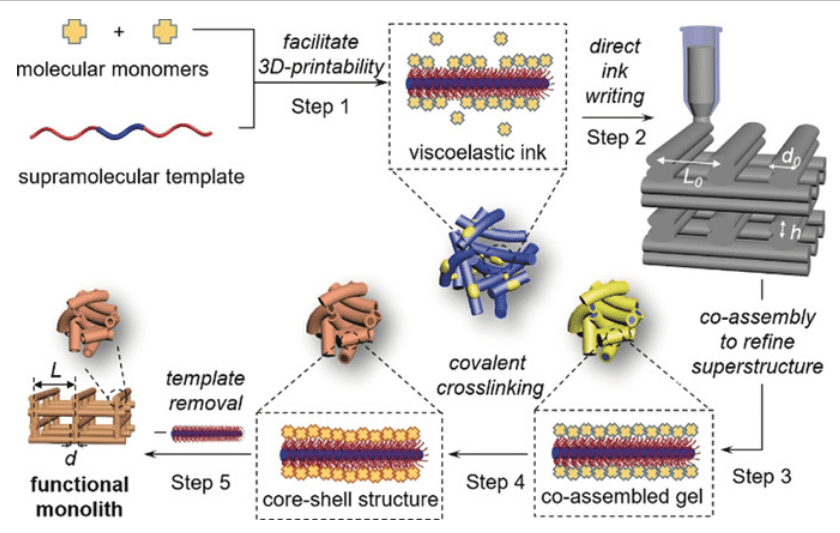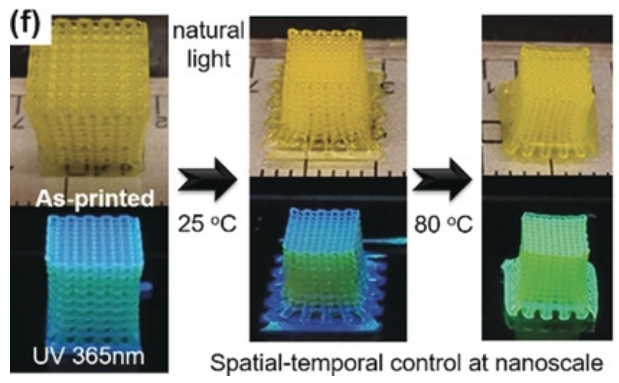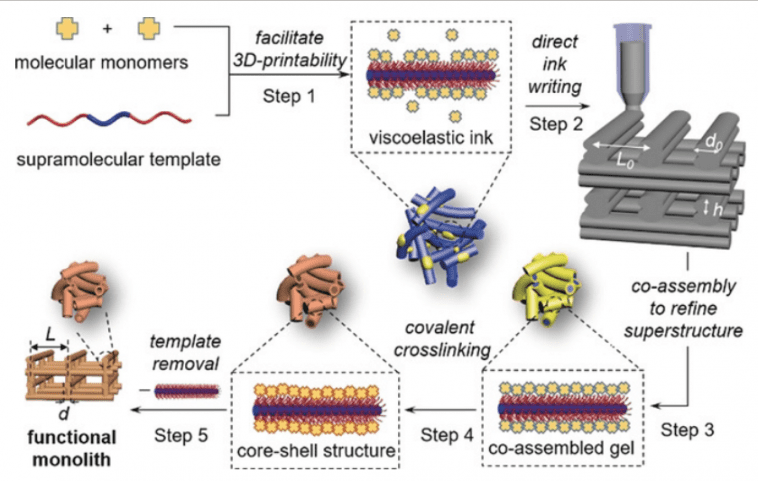3D printed materials that change shape and color may be coming to market sooner than previously thought.
A team of researchers at Dartmouth College recently presented a new smart ink which induces shape and color changes in 3D printed objects.
The innovation may be the beginning of 4D or intelligent printing. Applications could include a wide range of consumer products, biomedical utilities, and the energy sector.
“This technique gives life to 3D-printed objects,” explained Chenfeng Ke, an assistant professor of Chemistry at Dartmouth. “While many 3D-printed structures are just shapes that don’t reflect the molecular properties of the material, these inks bring functional molecules to the 3D printing world. We can now print smart objects for a variety of uses.”
The Dartmouth team employed various printing techniques to reduce the size of objects to just 1% of their original size. However, the creations gained 10x in resolution.
Thanks to the smart ink, objects can expand and contract in size through supramolecular pillars. In addition, the team added fluorescent trackers, which enable the color swap in response to light.
The ink is based on a polymer vehicle that transforms objects from nano- to macro scale. As part of the printing process, materials are not all-together hardened but instead locked in place to retain their form. The final object is then able to morph shape upon stimulation by light or chemicals.

The conceptual outline for the smart ink 3D printing process. (Image: Angewandte Chemie)
Molecules rearrange after printing
The innovation also opens the door for designers to print high-resolution object with low-cost 3D printers. What previously required a $100,000 printer, can now be achieved using a $1,000 model.
The smart ink can print at a resolution of 300 microns, whilst the final product has a line width of 30 microns.
“This is something we’ve never seen before. Not only can we 3D print objects, we can tell the molecules in those objects to rearrange themselves at a level that is viewable by the naked eye after printing. This development could unleash the great potential for the development of smart materials,” Ke added.
Although the development has some way to go, it is the first step toward a wholly new range of 3D printed objects.
The team at Dartmouth believes that the approach could “initiate the development of small molecule-based 3D printing materials and greatly accelerate the development of smart materials and devices beyond our current grasp that are capable of doing complex tasks in response to environmental stimuli.”

Fluorescent color-change of 3D printed smart ink object. (Image: Angewandte Chemie)
Source: phys.org & Angewandte Chemie International Edition
Website: LINK


